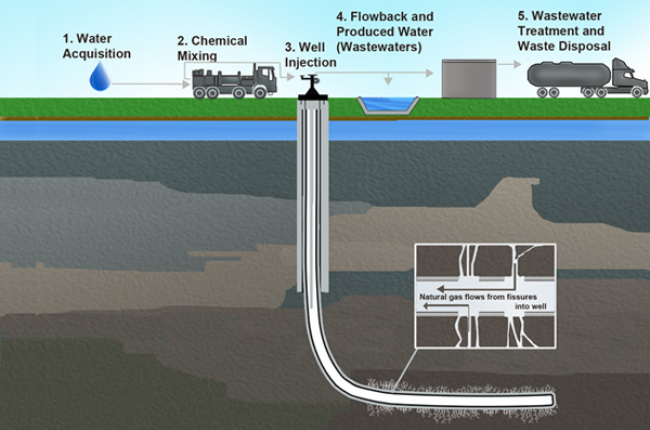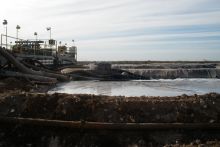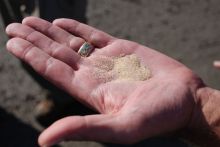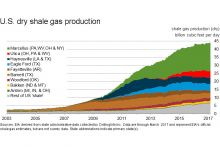
Information on this page was collected from the source acknowledged below:
"There isn’t really a “typical” fractured well because the amount of water used depends on the rock formation, the operator, whether the well is vertical or horizontal, and the number of portions (or stages) of the well that are fractured. In addition, some water is recycled from fluids produced by the well, so the net consumption might be smaller at sites that recycle. Water use per well can be anywhere from about 1.5 million gallons to about 16 million gallons."
Examples of average reported water usage per well include:
- Marcellus Shale, Pennsylvania, 4.5 million gallons (Risser, 2012, USGS Public Lecture, "Shale gas, Hydraulic Fracturing, and Induced Earthquakes")
- Wattenburg Sandstone, Colorado, 2.7 million gallons (Goodwin and others, 2012, Oil and Gas Journal)
- Barnett Shale, Texas, 2.8 million gallons (Nicot and Scanlon, 2012, Environmental Science and Technology)
- Eagle Ford Shale, Texas, 4.3 million gallons (Nicot and Scanlon, 2012, Environmental Science and Technology)
- Haynesville Shale, Texas, 5.7 million gallons (Nicot and Scanlon, 2012, Environmental Science and Technology)
- Bakken Formation, North Dakota, 1.5 million gallons (S. Haines, 2012, USGS personal communication)
- Horn River Shale, British Columbia, Canada, 15.8 million gallons (Horn River Basin Producers Group, 2010).
Learn More:
- Hydraulic Fracturing Water Usage (Webpage), Frac Focus
Discussion of the amount of water used in hydraulic fracturing ("fracking") compared with other water uses in the United States. Frac Focus is the national hydraulic fracturing chemical registry maintained by Ground Water Protection Council and Interstate Oil and Gas Compact Commission
- The Hydraulic Fracturing Water Cycle (Webpage), Environmental Protection Agency
An overview of the role of water throughout the life cycle of hydraulic fracturing
- Produced Waters Database (Map/Database), U.S. Geological Survey
Map-based database with the composition of over 165,000 samples of produced waters (water extracted from the ground along with oil and gas, including flowback of hydraulic fracturing fluid) in the United States. Data can also be downloaded for further use.
- Flowback and Produced Waters: Opportunities and Challenges for Innovation (Report), National Academy of Sciences
Summary of a 2016 workshop on the reuse, disposal, and treatment of produced and flowback water from hydraulic fracturing and other oil and gas operations





